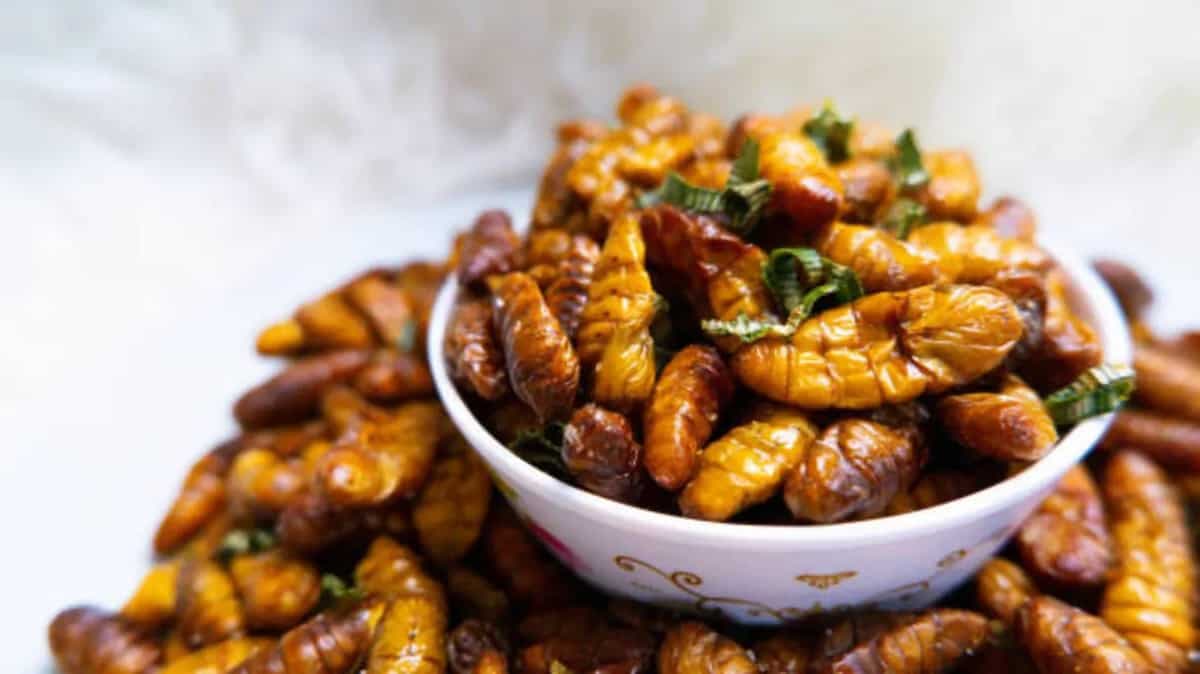Assamese cooks are known for their inventiveness in utilising unusual ingredients and cooking techniques to suit the region's environment, circumstances, and ingredient availability.Unusual cuisine lends a unique flavour to Assamese cultural events because it is frequently linked to ethnic holidays and celebrations. Assamese culinary traditions can be preserved in part through preparing and consuming unusual foods.
These some wired food items from Assamese cuisine:
1. Fried Red Ant Eggs:
An excellent source of protein, ant eggs add to the dish's nutritional value.Assamese cuisine's unusual and distinctive delicacy, fried red ant eggs, has a peculiar flavour. Red ant eggs are recognised for their distinct and surprising flavour, which is acidic and slightly lemony. The umami flavours are frequently enhanced throughout the frying process, giving the entire flavour profile more depth.A contrast that appeals to daring palates is achieved when the eggs are fried, retaining a soft and creamy centre with a crunchy exterior.Assamese culinary heritage is based on the ingestion of red ant eggs, which highlights the adaptability and resilience of indigenous communities.
Video Credit: YouTube/ Pari Gogoi
2. Silkworm Pupae:
In Assamese cuisine, silkworm pupae known as "Eri Polu" in Assam have a special place. Silkworm pupae are a distinctive culinary experience because of their somewhat crunchy texture and nutty, earthy flavour character.Pupae can develop umami overtones during preparation, which deepens the flavour overall. The final flavour is influenced by the cooking process.Assamese spices with their natural flavours are blended thanks to the silkworm pupae's ability to quickly absorb the flavours of the herbs and spices used during cooking. Pupae of silkworms are a rich source of protein because they contain important amino acids that the body needs for growth and repair. Silkworm pupae are a unique addition to the regional cuisine, demonstrating how Assamese cooks are inventive in making the most of what is readily accessible.
3. Fermented Bamboo Shoots:
Assamese cuisine uses fermented bamboo shoots as a special and unusual ingredient. The fermentation process gives fermented bamboo shoots a tangy, slightly sour flavour. This gives food a distinctive and delicious touch.The spicy and earthy undertone of the shoots gives richness to a variety of Assamese recipes.Bamboo shoots can provide a textural contrast depending on how they are prepared; they are slightly softer when fermented and crispier when fresh or rehydrated.Bamboo shoots that have undergone fermentation have higher probiotic levels, which improves gut health and facilitates digestion. In Assamese cuisine, bamboo shoots are symbolic of a link to customs and regional tastes, and have cultural value.Because they are a naturally occurring flavour enhancer, fermented bamboo shoots provide Assamese food a distinct flavour profile.
4. Fish intestine:
Assamese cuisine is known for its use of fish intestine, particularly in classic dishes like "Masor Tenga," or sour fish curry.The flavour of fish intestine is rich, concentrated, and frequently described as strong and aromatic.Fish intestine's porous structure allows it to take up the flavours of the foods around it, enhancing the dish's overall flavour. Fish intestine can give an intriguing contrast to a dish by having a somewhat chewy or tender texture, depending on how it is prepared.Using every component of the fish is indicative of the Assamese culture's emphasis on reducing waste and making the most of available resources.

5. Snail:
Snails, or "hamuk" in Assamese cuisine, are frequently cooked using a blend of regional spices and seasonings, giving them a distinct flavour. The mild, earthy flavour of snails absorbs the flavour of the herbs and spices that are used in their preparation.When prepared correctly, snails can take on the flavours of the food they are served with, becoming soft and slightly chewy.A wide range of spices are frequently used in Assamese cooking, and snail recipes are no different. The spices add to the flavor's depth and fragrance.Comparing harvesting snails to other animal agricultural practices, harvesting snails is frequently thought to be more environmentally friendly.Assamese cuisine offers a unique taste experience and is made more distinctive and daring by the use of snails.


